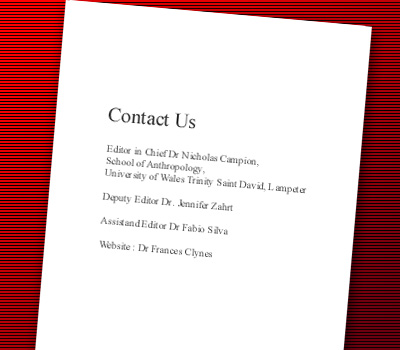We are currently seeking submissions for future volumes of Culture and Cosmos.
Volume 16
The Moon in the Landscape: Interpreting a Theme of Nineteenth Century Art
Gary Wells
Abstract
The image of the moon in the rural landscape is such a familiar and common theme in nineteenth century art that we should ask what made this theme so popular, widespread, and persistent. The similarity among these depictions borders on formula: a field or rustic farm, a broad horizon, a full moon rising or a thin crescent moon setting, perhaps a shepherd or field worker silhouetted against the twilight sky. But what made this image so appealing to nineteenth century artists and their audiences? This paper will examine the theme of the moon in the landscape, and will suggest that the persistence of the motif masks an evolving set of ideas about time, nature and change. From the personal visions of Samuel Palmer and Vincent van Gogh, to the contemplation of nature’s sublimity in Caspar David Friedrich and Thomas Moran, the expressive range of the subject is significant. But a common thread emerges when these images are seen within the context of the nineteenth century’s rapid industrialization, urbanization, and materialism. Rather than romantic invention or picturesque scenery, images of the moon in nineteenth century landscape art were used to explore a broad range of ideas about modernity, nature and humanity in an age of science and industry.









